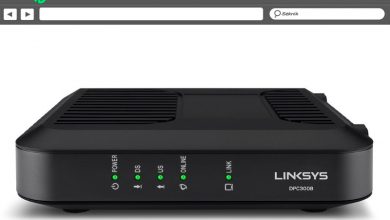ROM memory What is it, what is it for and what types are there in computer science?
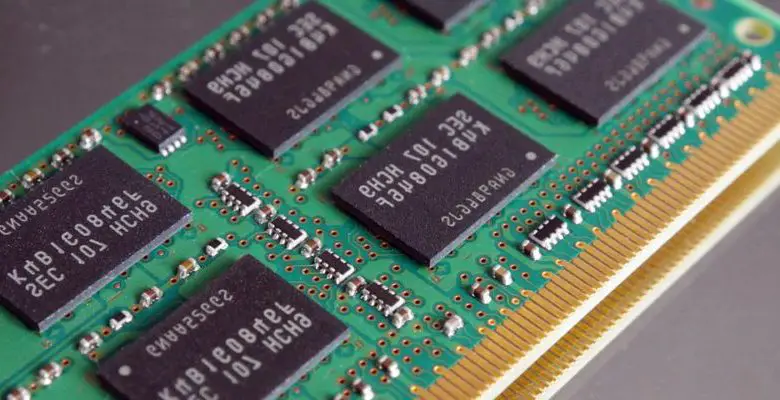
ROM memory is an essential part of our devices . Many people, many, use it without even knowing it exists, but its work is undoubtedly invaluable in the tech world.
We can predict that it is a type of memory that is used to start our systems and, with it, devices whether they are big or small. It comes from the factory and cannot be tampered with.
For the rest, we encourage you to know in depth about what it is, what types there are, how our devices use it and how it differs from RAM memory , already a little better known .
What is computer ROM and what is it used for?
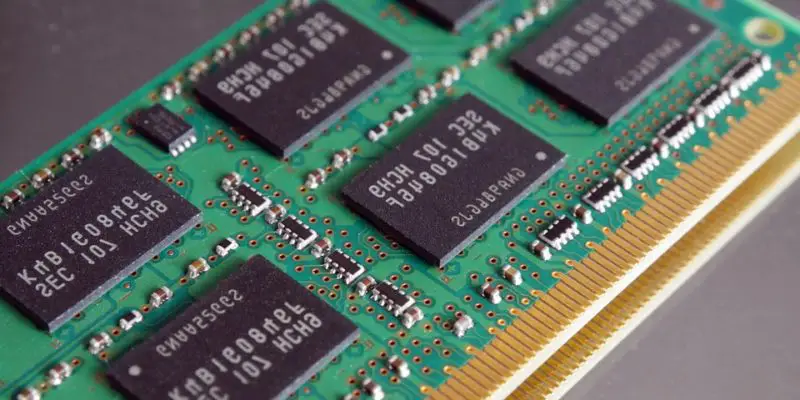
ROM is part of the hardware devices, be they computers, phones, tablets… and is linked to their startup process and their maintenance and their usability.
Definition
To define this concept, we will first go to its name, ROM, which is an acronym for Read-Only Memory , or memory in read only .
The main feature of this software element that we have already seen that it is always a memory, is that it is, at first, unalterable (we'll see later that there are ways to change them, but it's not easy to do so, and less at the user level).
So we have that the ROM is memory without write capacity, unsuitable for modification . This is due, in large part, in addition to the logical accidents that a user might cause by ignorance, to the fact of include inside the firmware of some hardware , that is to say a specific application for the control and execution of tasks.
Another essential feature is that it does not require electrical energy, so the storage is permanent . ROM is made up of a fairly basic set of programs that the system in question reads when lit . These are provided by the manufacturer when mounting the chip. Physically the ROM is on a small chip which does not include anything else.
Functions on PC and mobile devices
ROM functions as both a data store and a software store . More precisely, it stores a collection of codes and start-up instructions, including language interpreters, OS programs, control programs, information tables, etc.
It will also be used for check the functioning of the equipment that he accompanies and to recognize the operating system who controls the system and input and output devices.
Let's see how this is done in each situation:
- BIOS : To work with the BIOS, which is a program that controls essential I / O interfaces, we have the BIO ROM, a card on the motherboard that is read-only. BIOS is saved in ROM because it is necessary to read the rest of the memory elements of any computer, so we cannot store it in any of them.
- Bootstrap: It uses the disk and also the floppy disk drive to run the operating system by loading and running random access memory. This happens if there are faults in the hard drive system.
- CMOS configuration: allows access to a screen which appears when the equipment is powered on and which allows the modification of certain system parameters.
- POST Power-On Self Test: It is a self-executing software with startup which seeks to test the system.
- Backup: It is the copy of the instructions from the ROM to the RAM to have them faster.
- Data storage: it makes sense to save only those that should not be changed while the device is useful, such as a lookup table.
Read-only ROM or memory types and examples
Having contact with the computer and having read the above, you can already imagine that indeed there is different types of ROMs , considering that they are programmable, read-only, or erasable in some way, even including subtypes.
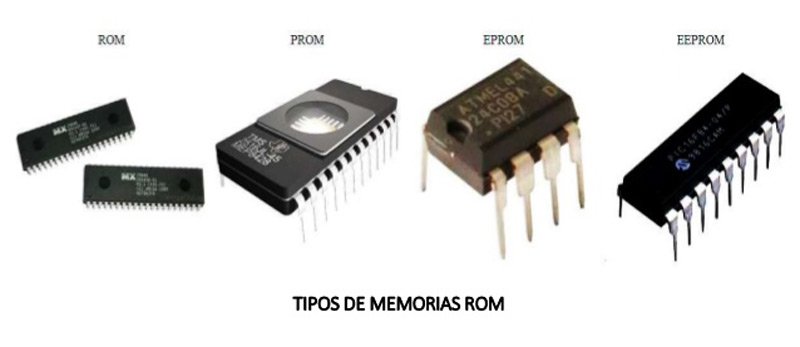
“UPDATE ✅ Do you need to know all the types, features and functions of ROM and don't know how to do it? ⭐ ENTER HERE ⭐ and find out how to do it step by step with this ✅ EASY and QUICK TUTORIAL »
The basis of this classification is semi-conduction:
ROM or memory in read only
He performs a information storage without electric current . It is also known as non-volatile memory because it is not lost when the system is turned off.
PROM, OTP or programmable read only memory
It's the one who requires the use of a programming device called PROM to be written . It works at high voltage with the intention of create and destroy internal links in a chip , that is why only one programming can be given.
Erasable programmable read only memory or EPROM
This memory is programmable read-only but can also be erased . This is achieved by exposing it to UV light for periods of more than 10 minutes. After that, it can be rewritten with a high voltage process (even more than we needed). A blanket is used to prevent erasure. We have the handicap of degradation, because the greater the UV exposure, the greater the wear, being the common thing to have about 1000 reprogramming cycles.
EEPROM or electrically erasable programmable read only memory
Its base is a semiconductor structure like the previous type, except that the content or a part of it is electrically wiped , in the same way it is rewritten later. This implies that it is not necessary to remove the memory from the computer, although we have to say that, compared to other memory tasks, it is a slower process.
In turn, we find these subtypes:
- EAROM or electrically modifiable read only memory : it is changed one bit at a time in a rather slow writing process that requires the use of a high voltage of at least 12 volts. Its use occurs in infrequent partial write applications and, sometimes, to store in a non-volatile manner in order to obtain configuration data of the critical system of the equipment where it is located
- Flash, Flash ROM or Flash EEPROM: Erasing and rewriting is faster and its resistance is very high, being able to offer more than a million cycles. It replaced the old ROMs in many cases.
It is essential to indicate that to date, the term ROM is used to interchangeably refer to any type of read only memory , because, in fact, the original type is already in disuse due to improvements that have been implemented until conformance to the various types that we have seen.
Same ROM and storage memory?
Not at all , it is curious to know how the concept of ROM has been mistakenly used to refer to the storage memory of devices, of the type we use to download video games, movies, etc.
So much so that even in stores and on devices certain brands (mainly phones and tablets), this is called , and we see it in the phone settings and in the descriptions that the "experts" make in their stores to show you the trendy new phone or a super computer.
ROM
- La ROM, we have already seen it, it is a tiny memory that has the basics to operate the device, a spark, so to speak.
- It is unalterable (in principle) by the user.
- It is located inside the computer, in the form of a chip.
Storage memory
- Le memory storage is another type of memory, much larger today, where he will stop everything we keep on your computer.
- We have full access to this content ; We can view it whenever we want and it can also be deleted at will, using the space to save new information when we need it. The things that are saved in the storage memory are not essential or critical for the operation of the device, that is all this content that we download and install voluntarily and that we want to stay a posteriori.
- The hardware that houses the storage memory is called a Hard disk , and it can be both internal, as part of the equipment, or an add-on, an external hard drive, which would be a hybrid storage device. La USB key is also considered a memory of storage , although the capacity is smaller, but it works the same.
Main differences between ROM and RAM
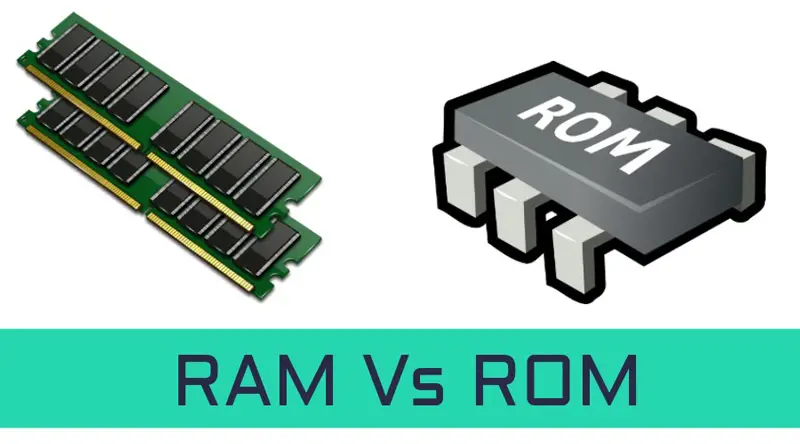
Easily confused by those who only superficially use computers and other devices, the two concepts refer to the memory systems of a device or computer, but they are not at all the same. You can see in more detail all the differences between RAM and ROM to leave this place.
ROM
- We have already seen that the memory is read only , that is, a collection of information which is only useful for reading and, with it, starting and maintaining the proper functioning of the equipment in question.
- Those are information from start-up, configuration and basic maintenance non-volatile , grouped together in a small chip.
- It works with essential information, necessary to start the system .
RAM
- La RAM is the acronym of random access memory or Random Access Memory.
- This means that the access is given to any existing memory byte in our system without needing to access previous bytes.
- This one is erasable, volatile, perishable, it is lost , later, when it stops receiving energy from a current source. It's also faster . Its physical format is a larger card with complex circuits.
- It works with secondary software which requires a temporary effort such than video games, browsers, etc.
If you have any questions, please leave them in the comments, we will get back to you as soon as possible, and it will be a great help for more community members as well. Thank you!



